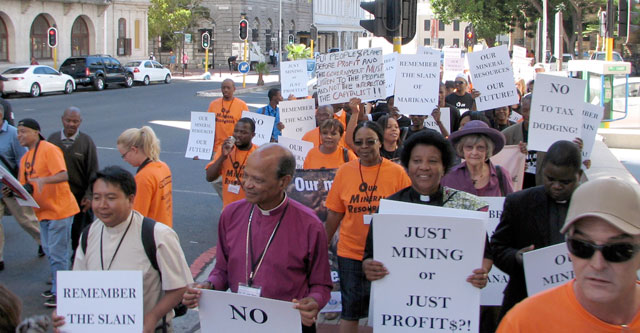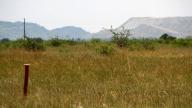South Africa’s economy was largely built on mining, and mining – for platinum, coal, gold and diamonds, among other things – continues to play a central role in South African politics and economics. South African mining companies are also a major force across the continent, but there is increasing competition, especially from Canadian, Australian, and Chinese investment. With civil society organisations growing in strength and getting better connected to each other, MiningWatch is also getting more involved. At the beginning of February, Africa Program Coordinator Jamie Kneen travelled to the 4th annual Alternative Mining Indaba (or gathering) in Cape Town, along with Board of Directors member Ian Thomson (also a Kairos staff member and chair of the CNCA), who’s written a great blog post about the event here.
The Alternative Mining Indaba, or People’s Indaba, was organised by a number of South African groups in response to the annual “Investing in African Mining Indaba” to bring community perspectives to the forefront in mining policy discussions, and to bring communities, civil society organisations, academics, and activists together to develop and proclaim a clear agenda to support mineworkers and mining communities but also to prevent and rehabilitate the environment and the health of people and communities affected by mining.
The People’s Indaba heard from analysts and organisers from as far away as Ghana and Tanzania, but the most devastating testimony was from the survivors of the Marikana massacre, who talked about the terrible conditions that led to the initial strike, and the failure of the mining companies and the authorities to fulfil their promises to improve things. The strikers were not even receiving the increased pay that Lonmin had agreed to. Participants joined Bishop Jo Seoka, Chairperson of the Bench Marks Foundation, in marching to the official Indaba site as Seoka tried to present the South African mines minister with the People’s Indaba’s demands.
All in all, the People’s Indaba got a lot of visibility in the South African media and even internationally, but it also moved participants one step closer to coordinated work to make mining companies and governments alike accountable for their actions. The Alternative Indaba idea has been picked up by groups across southern and eastern Africa, with smaller gatherings being held from Zimbabwe to Tanzania.
The trip itself was an important opportunity to build links with other organisations as well as following some of the growing Canadian interests in the region. We visited Mosesetjane, in Limpopo Province, where infamous mining promoter Robert Friedland’s Ivanplats had its drill rigs kicked out by residents who are refusing to be relocated to make way for the mine, and made excellent contacts with people dealing with Canadian mining interests – and problems – from several countries. We will be reporting on these cases as they progress.

